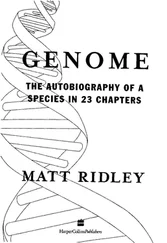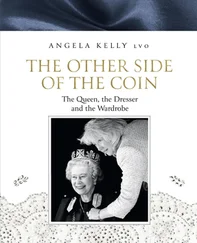The Queen - Matt Ridley
Здесь есть возможность читать онлайн «The Queen - Matt Ridley» весь текст электронной книги совершенно бесплатно (целиком полную версию без сокращений). В некоторых случаях можно слушать аудио, скачать через торрент в формате fb2 и присутствует краткое содержание. Жанр: Старинная литература, на английском языке. Описание произведения, (предисловие) а так же отзывы посетителей доступны на портале библиотеки ЛибКат.
- Название:Matt Ridley
- Автор:
- Жанр:
- Год:неизвестен
- ISBN:нет данных
- Рейтинг книги:4 / 5. Голосов: 1
-
Избранное:Добавить в избранное
- Отзывы:
-
Ваша оценка:
- 80
- 1
- 2
- 3
- 4
- 5
Matt Ridley: краткое содержание, описание и аннотация
Предлагаем к чтению аннотацию, описание, краткое содержание или предисловие (зависит от того, что написал сам автор книги «Matt Ridley»). Если вы не нашли необходимую информацию о книге — напишите в комментариях, мы постараемся отыскать её.
Matt Ridley — читать онлайн бесплатно полную книгу (весь текст) целиком
Ниже представлен текст книги, разбитый по страницам. Система сохранения места последней прочитанной страницы, позволяет с удобством читать онлайн бесплатно книгу «Matt Ridley», без необходимости каждый раз заново искать на чём Вы остановились. Поставьте закладку, и сможете в любой момент перейти на страницу, на которой закончили чтение.
Интервал:
Закладка:
There are clear advantages to doing so. A songster can switch his ornament off when danger threatens. A bower builder can leave his behind."
More direct evidence of this pattern comes from fish. John Endler of the University of California at Santa Barbara studies the courtship of guppies and is especially interested in the colors adopted by male guppies: Fish have magnificent color vision; whereas we use three different types of color-detecting cells in the eye (red, blue, and green), fish have four, and birds have up to seven. Compared to the way birds see the world, our lives are mono-chrome. But fish : also have a very different experience from us because their world filters out light of different colors in all sorts of variable ways. The deeper they live, the less red light penetrates compared with blue. The browner the water, the less blue light penetrates. The greener the water, the less red or blue light penetrates.
And so on. Endler 's guppies live in South American rivers; when courting, they are usually in clear water where orange, red, and blue are the colors that show up best. Their enemies, however, are fish that live in water where yellow light penetrates best. Not surprisingly, male guppies are never yellow.
The males use two kinds of color, one red-orange, which is produced by a carotenoid pigment that the guppy must acquire from its food, and the other blue-green, which is caused by guanine crystals in the skin that are laid down when the guppy reaches
::: 164
The Red Queen
maturity. Female guppies that live in tea-colored water, where red-orange is more easily seen, are more sensitive to red-orange light than to blue, which makes sense. The brains of such guppies are tuned to exactly the wavelength of the red-orange carotenoid pigment the male uses in display—and perhaps vice versa."
OF MOZART AND GRACKLE SONG
Down the corridor from Ryan at the University of Texas is Mark Kirkpatrick, who is prepared to upset even more apple carts. Kirkpatrick is acknowledged as one of those who understands sexual selection theory most thoroughly; indeed, he was one of those who made Fisher's idea mathematically respectable in the early 1980s.
But he now refuses to accept that we must choose between Fisher and Zahavi. He does so partly because of what Ryan has discovered: This does not mean Kirkpatrick rejects female choice, as Julian Huxley did. Whereas Huxley thought males did the choosing by fighting among themselves, Kirkpatrick prefers to believe that in many species the females do choose, but their preferences do not evolve. They merely saddle the males with their own idiosyncratic tastes.
Both Good-genes and Fisher theories are obsessed with trying to find a reason for exuberant display that benefits the male.
Kirkpatrick looks at it from the female 's point of view: Suppose, he says, that peahens' preferences have indeed saddled peacocks with their tails. Why must we explain these female preferences only in terms of the effects on their sons and daughters? Might the peahens not have perfectly good direct reasons for choosing as they do? Might their preferences not be determined by something else entirely? He thinks "other evolutionary forces acting on the preferences will overwhelm the Good-genes factor and often establish female preferences for traits that decrease male survival.'
Two recent experiments support the idea that females simply have idiosyncratic tastes that have not evolved. Male grackles—
blackish birds of medium size—sing only one kind of song. Female
'
THE PEACOCK S TALE
::: 165 :::
grackles prefer to mate with males that sing more than one kind of song: William Searcy of the University of Pittsburgh discovered why. He made use of the fact that a female grackle will go up to singing loudspeakers and adopt a soliciting posture as if waiting to be mated. Her tendency to do so declines, however, as she gets bored with the song: Only if the loudspeaker starts singing a new song will her soliciting start afresh. Such " habituation" is just a property of the way brains work; our senses, and those of grackles, notice novelty and change, not steady states: The female preference did not evolve; it just is that way."
Perhaps the most startling discovery in sexual selection theory was Nancy Burley 's work on zebra finches in the early 1980s.
She was studying how these small Australian finches choose their mates, and to make it easier she kept them in aviaries and marked each one with a colored ring on its leg. After a while she noticed something odd: The males with red rings seemed to be preferred by the females. Further experiments proved that the rings were drastically affecting the "attractiveness " of both males and females.
Males with red rings were attractive; those with green rings unattractive; females with black or pink rings were preferred; those with light blue rings disliked: It was not just rings: Little paper hats glued to the birds ' heads also altered their attractiveness: Female zebra finches have a rather simple rule for assessing potential mates: The more red he has on his body (or the less green, which comes to the same thing given that red and green are seen as opposites by the brain), the more attractive he is. 7b If females have an existing aesthetic preference, it is only logical that males will evolve to exploit that preference: For example, it is possible that the "eyes" on a peacock 's tail are seductive to peahens because they resemble huge versions of real eyes. Real eyes are visually arresting—perhaps even hypnotic—to many kinds of animals, and the sudden appearance of many huge staring eyes may induce a state of mild hypnosis in the peahen, which allows the peacock to lunge at her:" This would be consistent with the common discovery that "supernormal stimuli " are often more effective than normal ones. For example, many birds prefer a ridiculous giant
::: 166:::
The Red Queen
egg in their nest to a normal one; a goose will prefer to try to sit on an egg the size of a soccer ball than one of normal size: It is as if their brains have a program that says "like eggs, " and the bigger the egg, the more it likes them. So perhaps the bigger the eye-spot, the more attractive or startling it is for a peahen, and the mile has simply exploited this by evolving lots of giant eyes without any evolutionary change in the female 's preference. 7e HANDICAPPED ADVERTISERS
Andrew Pomiankowski of London accepts much of what Ryan and Kirkpatrick say but parts company with them on the matter of female choice. He says that what they are considering is merely a constraint that channels the male ' s trait into the preferred direction of the female's sensory bias. But that does not mean the exaggeration happens without the female 's preference changing. It is almost impossible to see how females could avoid the Fisher effect as the male 's ornament gets more exaggerated generation by generation. The female who is most discriminating picks the sexiest male and so has the sexiest sons; the one who has the sexiest sons has the most granddaughters. So females get more and more discriminating and more and more difficult to seduce or hypnotize: "The crucial question, " wrote Pomiankowksi, "is not whether sensory exploitation has been involved but why females have allowed themselves to be exploited. " Besides, it is an impoverished view of selection to believe that a frog 's ear can be tuned for detecting predators but not tuned simultaneously and differently to choosing males."
Thus, it is possible to argue with Ryan and Kirkpatrick that male courtship extravagances reflect the innate tastes of females without abandoning the idea that those tastes are of use to the females in that they select the best genes for the next generation. A peacock 's tail is, simultaneously, a testament to naturally selected female preferences for eyelike objects, a runaway product of despotic fashion among peahens, and a handicap that reveals its posses-
Читать дальшеИнтервал:
Закладка:
Похожие книги на «Matt Ridley»
Представляем Вашему вниманию похожие книги на «Matt Ridley» списком для выбора. Мы отобрали схожую по названию и смыслу литературу в надежде предоставить читателям больше вариантов отыскать новые, интересные, ещё непрочитанные произведения.
Обсуждение, отзывы о книге «Matt Ridley» и просто собственные мнения читателей. Оставьте ваши комментарии, напишите, что Вы думаете о произведении, его смысле или главных героях. Укажите что конкретно понравилось, а что нет, и почему Вы так считаете.












